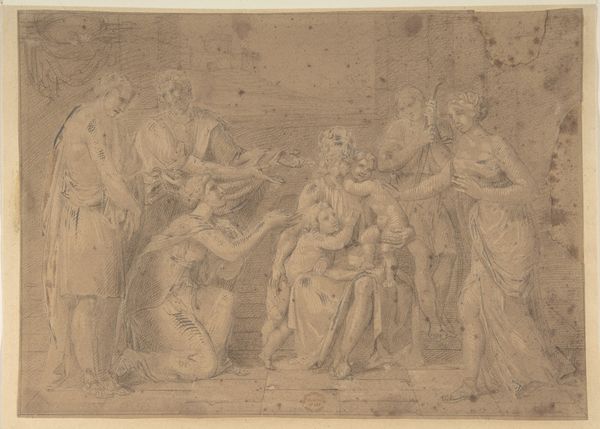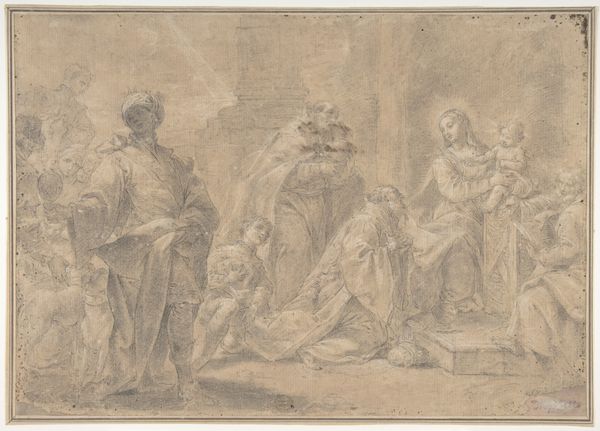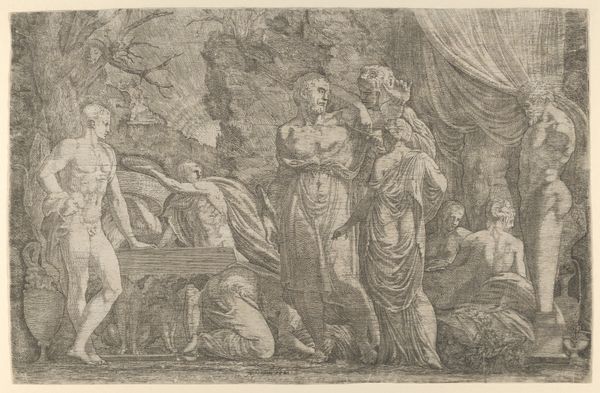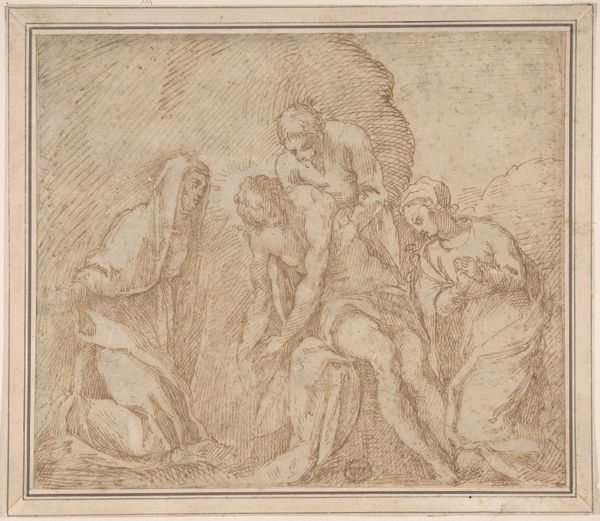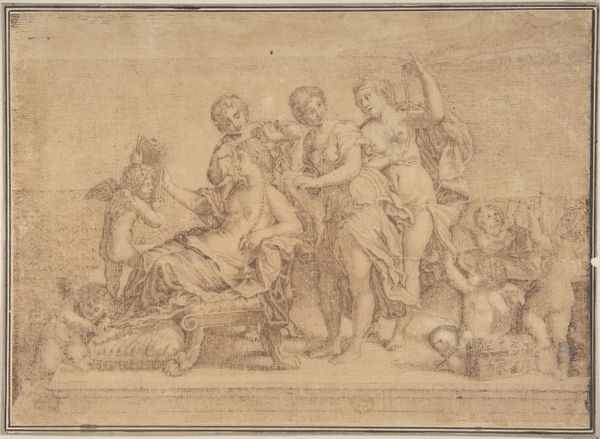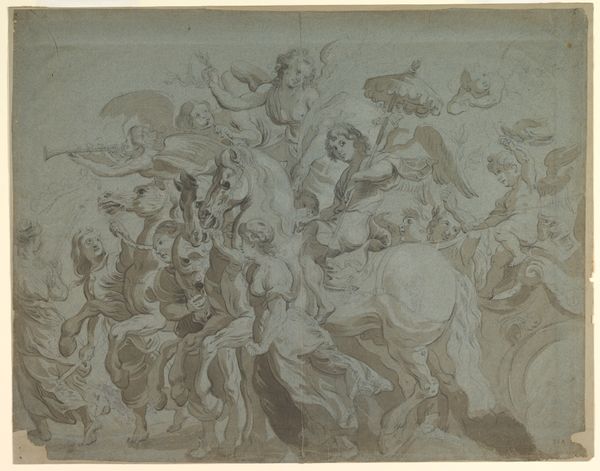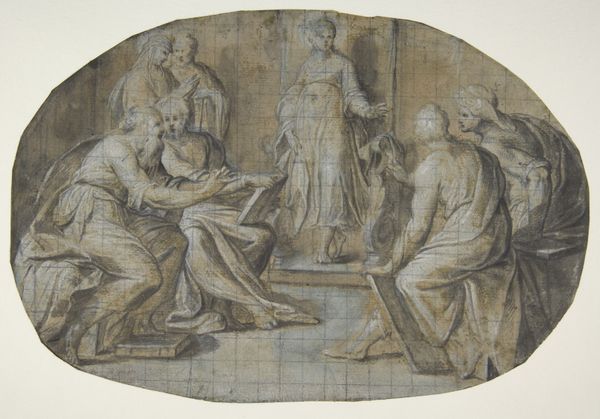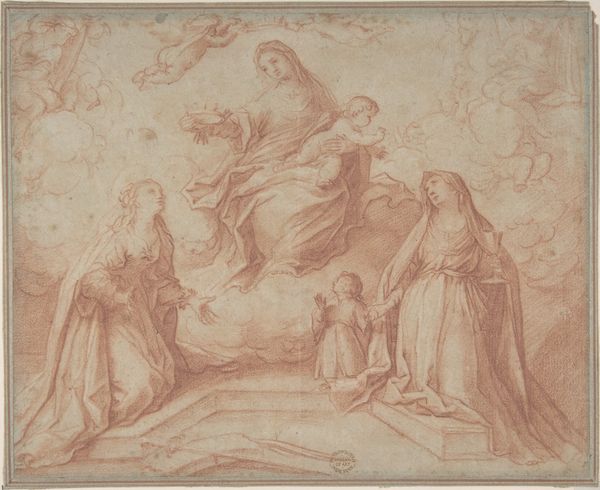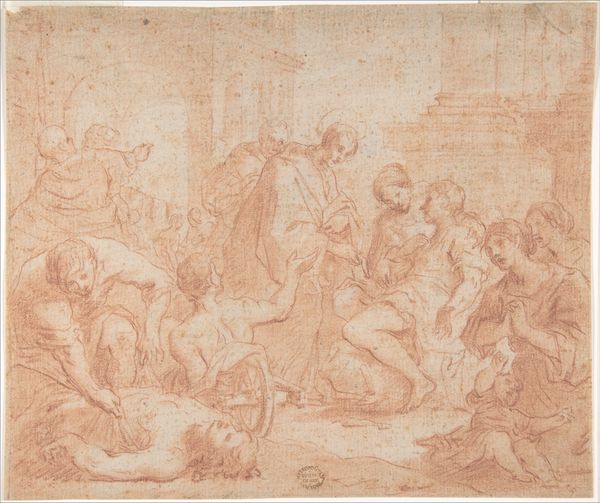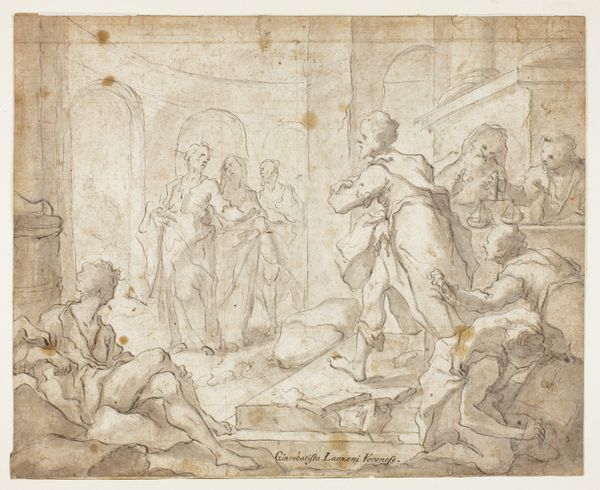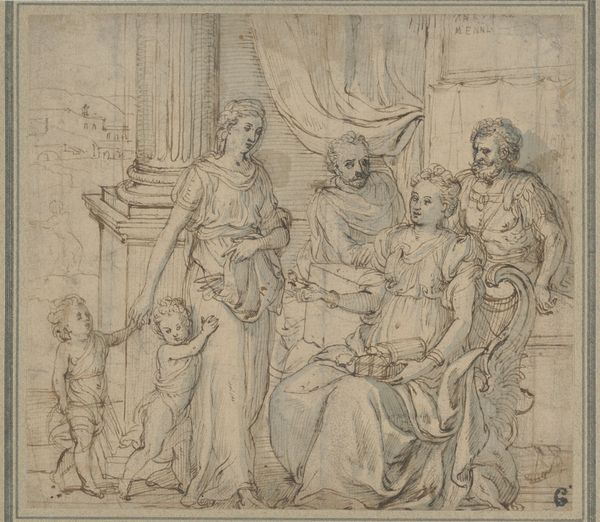
Madonna and Child with the Infant Saint John the Baptist, Three Women, and an Angel 1530 - 1590
0:00
0:00
drawing, print, paper, fresco, pencil
#
drawing
# print
#
pencil sketch
#
charcoal drawing
#
figuration
#
paper
#
fresco
#
11_renaissance
#
madonna
#
child
#
pencil
#
history-painting
#
angel
Dimensions: Sheet: 5 7/8 × 7 3/8 in. (14.9 × 18.7 cm)
Copyright: Public Domain
Curator: Let's turn our attention to this intriguing drawing entitled, "Madonna and Child with the Infant Saint John the Baptist, Three Women, and an Angel." Created sometime between 1530 and 1590, it's currently housed here at the Metropolitan Museum of Art. Editor: Oh, wow, the dynamism in this piece is stunning! It's just a flurry of bodies and fabric, all rendered in these delicate pencil strokes. There's a sort of angelic free-fall happening that feels so energetic! Curator: It's precisely that sense of movement which points to its potential function as a preparatory sketch. Artists during the Renaissance, and particularly those concerned with large scale frescoes, would use drawings like this to experiment with composition and form before committing to paint. Editor: Makes sense! Looking at the angel, you can see where he's sketched the same wing multiple times searching for the perfect curve. Do you think this particular composition was meant to be placed above the viewer? I see the figures looking down, towards something beyond the picture plane. Curator: An astute observation. Given its likely function and the arrangement of the figures on a staircase-like structure, it suggests the planned fresco may have been located above the altar within a chapel or church. This placement would elevate the holy figures above the earthly worshippers. Editor: The more I look, the more compelling the composition is: figures cascade down towards the viewer while the background feels more like a divine light than an architectural setting. I think I'm responding to how immediate it feels despite it being created centuries ago. Curator: The immediacy stems from the spontaneity of the medium. Drawing allows for directness of expression which the fresco wouldn’t allow. It also echoes larger shifts in how the public experienced religious art during the later Renaissance; increasingly humanized figures encouraged a more intimate devotion. Editor: You know, looking at it, there's a certain incompleteness which encourages my imagination. It leaves room for mystery, I feel like I'm collaborating with the artist, co-creating something special and otherworldly. Curator: Perhaps that unfinished quality underscores a core function of Renaissance workshops. These works become communal efforts and training grounds that allow artistic dialogues across generations of creators. Editor: Absolutely! For me, it emphasizes the spirit of investigation. The artist searches not just for an image but also some truth, some way to get closer to these celestial ideals. Curator: Indeed, a sentiment that resonates across time and context. It leaves us reflecting on art as a continual pursuit rather than a fixed object of veneration.
Comments
No comments
Be the first to comment and join the conversation on the ultimate creative platform.
